Media | Articles
Final Parking Space: 1968 Jeepster Commando
Our previous two Final Parking Space occupants were 1980s four-wheel-drive commuters found in Colorado boneyards, so this week we’ll stick with a similar theme while heading north one state and back two decades. Here’s a Jeepster Commando, found in an excellent self-service yard in Cheyenne, Wyoming.

Cheyenne Auto and Metal has plenty of late-model inventory, but the most interesting stuff is in a separate section full of American cars and trucks from the 1930s through 1970s.

I’ve documented some of these vintage machines during the past few years, including a 1938 Oldsmobile Eight, a 1955 Hudson Rambler Cross Country, a 1957 Chevrolet One-Fifty, a 1958 Studebaker 3E Transtar, and a 1972 AM General DJ-5B Dispatcher.

They’ve even got a row of vintage tractors, for those looking for Case or McCormick parts. CA&M is located conveniently close to the interchange of Interstate 80 and Interstate 25, so I recommend a visit if you’re passing through the region. The employees are friendly and the prices are reasonable.

Our own Sajeev Mehta joined me on this trip, so check in later for his accounts of Dearborn (and other) iron in the Mountain Time Zone.
Marketplace
Buy and sell classics with confidence

The Jeep Jeepster Commando was built by Kaiser Jeep and the the American Motors Corporation from the 1966 through 1973 model years, becoming just the Jeep Commando for its final couple of years.

The Jeepster name comes from the inexpensive Brooks Stevens-designed car built by Willys-Overland from 1948 through 1950. The Jeepster Commando was more truckish than its ancestor and featured four-wheel-drive; it was built to compete against the likes of the Ford Bronco and IHC Scout as a vehicle that was competent off-road while also being tolerable for commuting.

I must admit that I’m not 100% sure this really is a 1968 model, because Kaiser-Jeep was on the slapdash side with its numbering when it was built and lines between model years are blurry with the pre-AMC Commandos (plus the build tag on the other side of the firewall was illegible). Please help out in the comments if you have the required Jeepster expertise to give us an exact model year.

The Commando was available as a convertible, station wagon, “half-cab” pickup, and roadster. This one is a pickup, with the bolt-on hardtop nowhere to be found.

The engine is a 225-cubic-inch Dauntless V-6, which is a fascinating piece of American automotive history in its own right.

The Dauntless was the Buick “Fireball” V-6, first introduced in the 1962 Buick Special. It was derived from the Buick aluminum 215 V-8 and was at heart three-quarters of the “Wildcat 310” 300-cubic-inch cast-iron version of that engine. That makes it a close cousin to the Rover V-8 and direct ancestor to the 25 million 3.8-liter Buick V-6s built from the middle 1970s through the late 2000s.

GM lost interest in the Fireball after 1967 and sold all its tooling to Kaiser-Jeep. After certain geopolitical events that took place in late 1973 made GM desperate for an engine less thirsty than its big V-8s of the time, American Motors sold the tooling back, and the first 231/3.8 V-6s began going into GM cars during the 1975 model year. Disappointingly, the Pontiac OHC straight-six wasn’t revived at this time.

GM didn’t want to spend the money to design a new crankshaft from scratch for the original Fireball, so this is an “odd-fire” engine that needed a heavy flywheel to reduce the vibrations you get from a 90° V-6 with 90° V8-style crank pins. The Buick V-6 got an even-fire crankshaft in the late 1970s, which made it a much smoother-running engine, but by that time AMC had ditched the Dauntless in favor of its own straight-six engines.

It’s missing some parts but looks solid enough for a restoration.
***
Check out the Hagerty Media homepage so you don’t miss a single story, or better yet, bookmark it. To get our best stories delivered right to your inbox, subscribe to our newsletters.

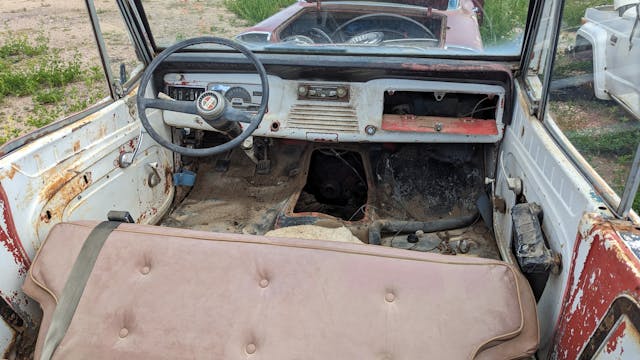
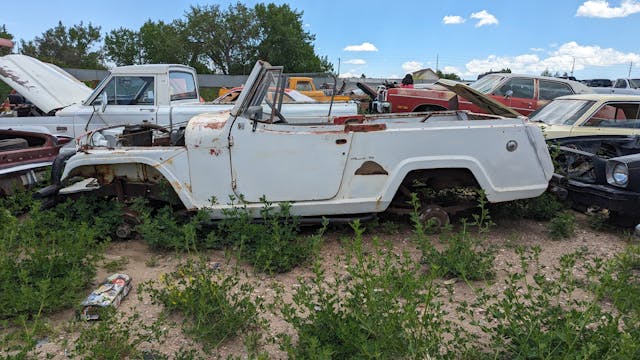


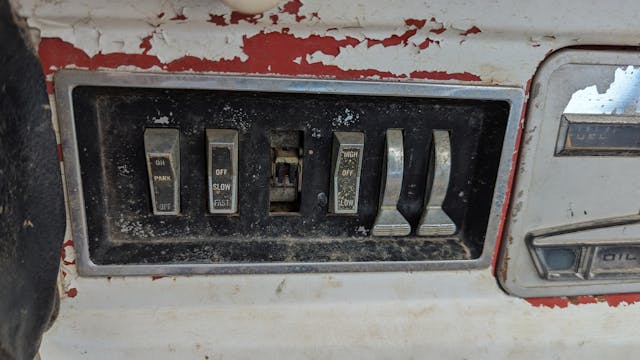



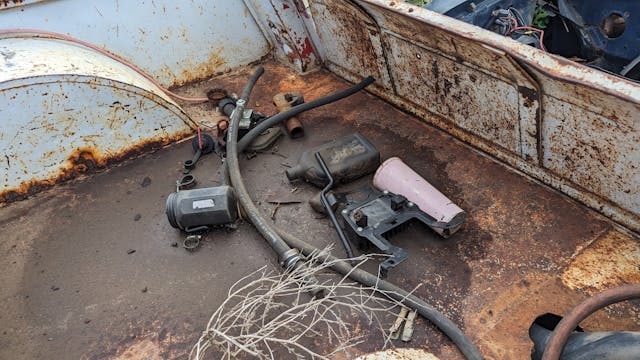
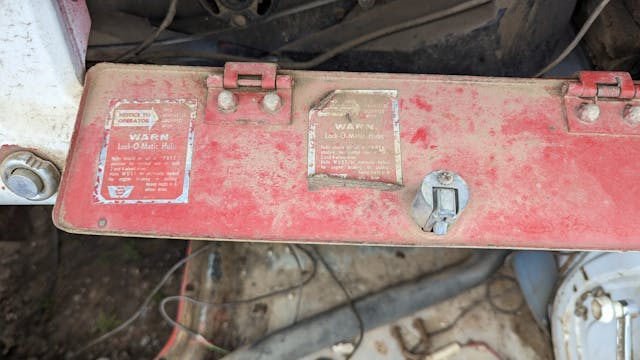
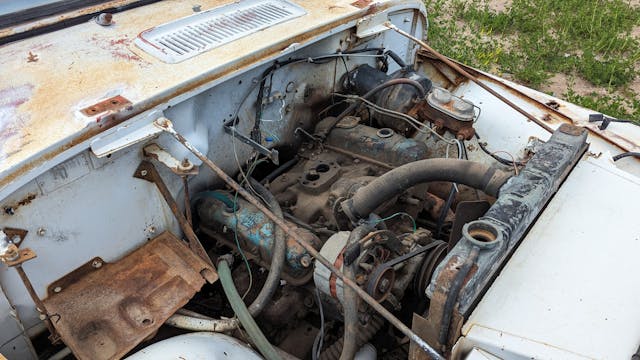


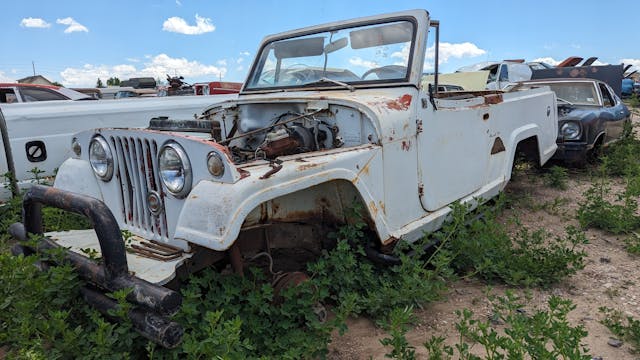
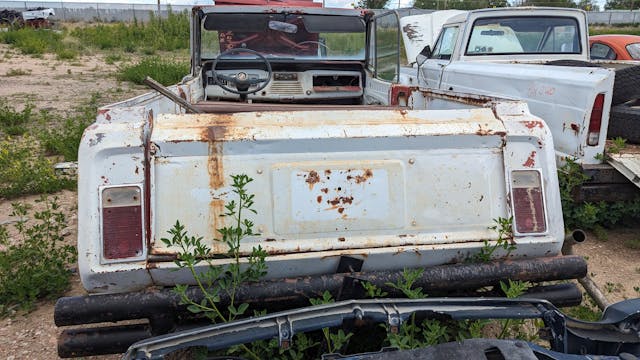
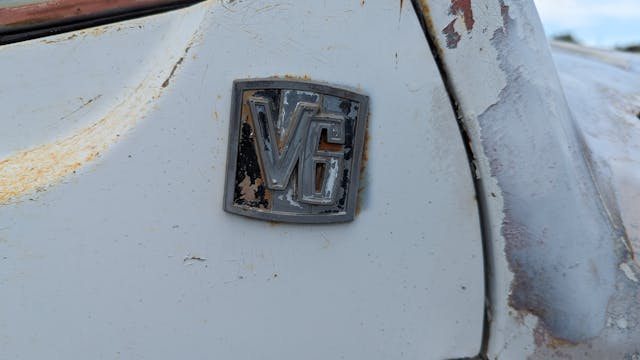








































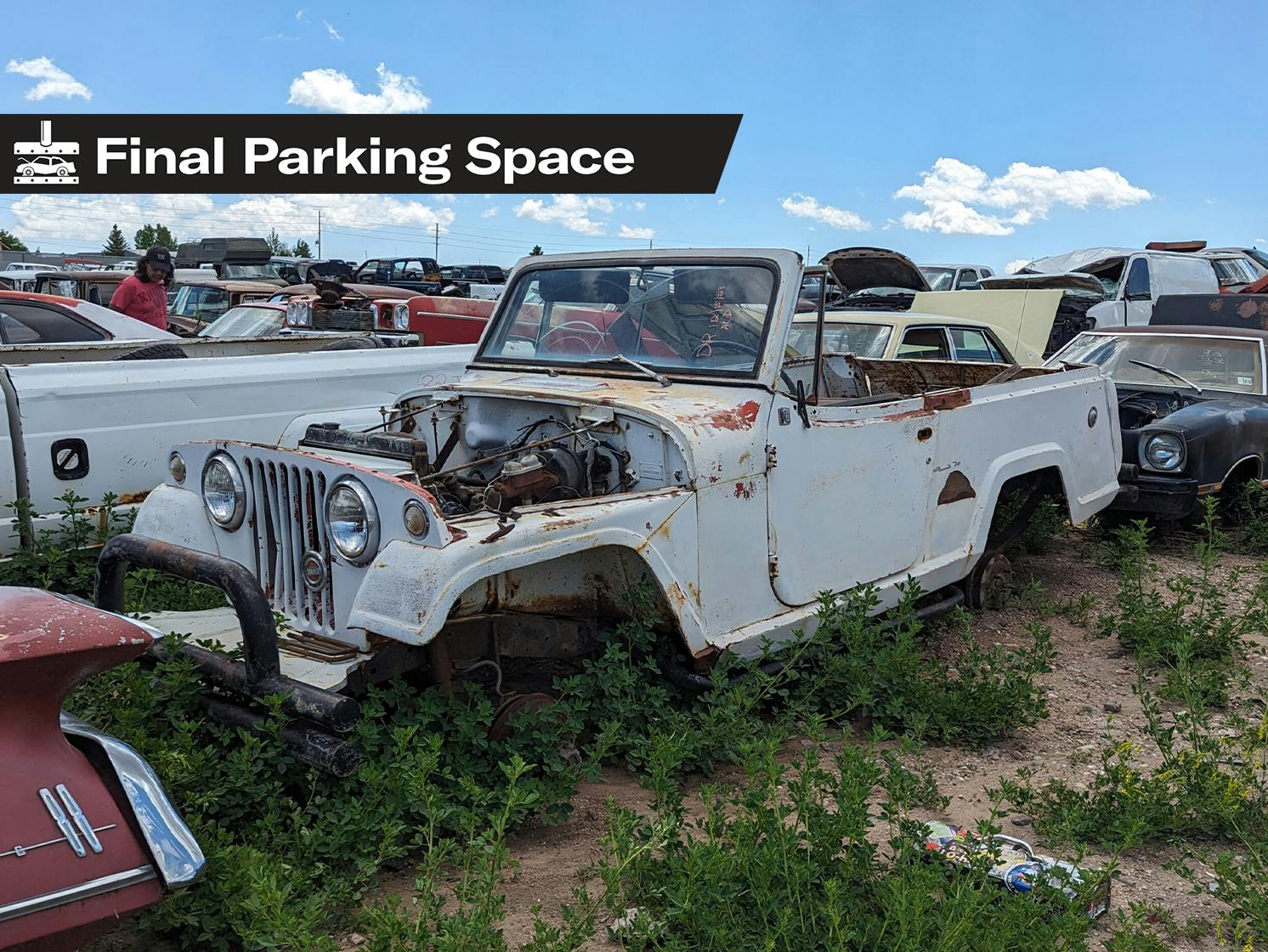
That looks like a fantastic yard – particularly since they are a pick a part. Looks like they don’t crush stuff very frequently – a fault of the big city yards.
I think that Dauntless would have to go – not really a great restoration option, IMO. But if one could find an old aluminum Buick 215, that would be interesting in this rig. If not, I’m sure that with some firewall massaging, an SBC would be a pretty easy fit. Not much to indicate what it looks like underneath, but if it’s in similar shape as the top-side, it might indeed be a decent project.
I worked at a garage in the late 60’s, early 70’s. You could check a car’s year by looking at the tail light lens. The two digit year was typically molded with the part number in the lens.
I know people who go completely gonzo over these jeepsters, and it surprises me that someone hasn’t attempted to at least do something with this one
That could see some new life. The engine as exposed internally to the elements might be kind of gross inside.
If the floor pan and the longitudinal frame and cross members are not fully rotted away, then this vehicle has potential for a few upgraded designs. Engine and trans are probably a no-go, and not worth rebuild. Both are relatively easy to replace with newer motive equipment. Likewise, suspension and braking systems are replaceable with newer tech. The question is always how much top put into it to make 2-3 times the investment
Given it’s a Jeepster Commando to begin with – a not “over-the-top” rebuild into a ever day usable Jeepster may generate a hefty profit on either the West or East Coast markets within 100+ mile ranges of the ocean shores.
Even an old Jeep Wrangler 4 or 6 cylinder and manual or automatic drive-line would serve that use well.
Just wish I was younger and needed another project.
I believe it is a 1967 as it lacks the side clearance light in the front fenders.
Trucks weren’t required to have side marker lights until later on.
The 1960 Olds 88 parked in front of the Jeep would be a fun story.
That’s exactly what I was thinkin’. My dad was an Olds man and had to have a new car every two years or so, as he was in sales. No pictures of the cars he had though, so I doubt he was a “car guy” in the definition we think of.